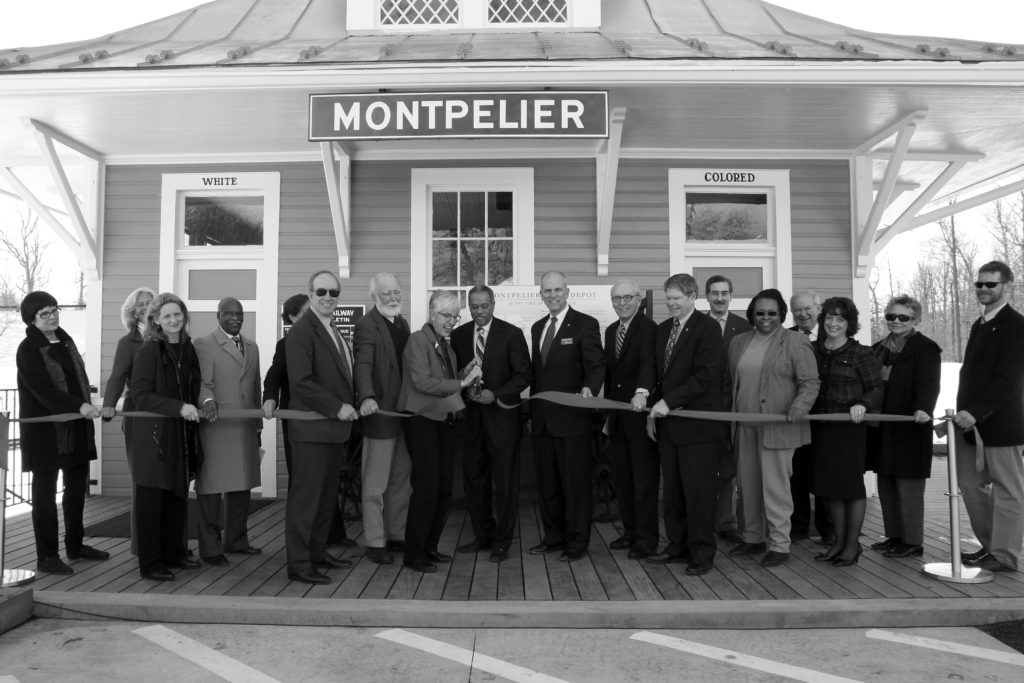A Norfolk-Charlottesville Connection
Russell Childs honored by Montpelier Foundation
by Linda Childs
On February 21, a crisp Sunday during Black History Month, a crowd of almost 200 gathered in Orange, Va., at the gateway to James Madison’s historic home, Montpelier, to dedicate the newly-restored Montpelier Depot train station to the memory and vision of one of Norfolk’s own, Russell Coffin Childs. The culmination of three years collaborative effort and fund-raising by the Montpelier Foundation and the Childs family and friends, the Depot embodies the Jim Crow era of ‘Separate but (Un)Equal’ public accommodation for Black citizens. Built in 1910 by Montpelier’s then-owner, William Dupont, to conform to Southern Railway specifications, it’s ‘Colored’ and ‘White’ waiting rooms embody architecturally the power of segregation in a state that embraced it to the very end.
As Montpelier’s Project Director from 2000-2004, Russell Childs was among the first to point out the larger story that Montpelier encompasses. It was built by enslaved Africans in Ambrose Madison’s time and worked by them as James Madison sat upstairs in his library, crafting the outline of the U.S. Constitution. Across the road was the site of a Confederate Army encampment next to property soon to be owned by a newly freed slave, a Freeman named George Gilmore.
With the end of Reconstruction following the Civil War, many states in the South began passing laws abridging the rights of Blacks to share public accommodations with Whites. In the 1890s, a very light-skinned Black man named Homer Plessey violated the Separate (Railroad) Car Act in Louisiana and was arrested and thrown off the train. The 1896 U.S. Supreme Court ruling in Plessey v. Ferguson, codified what is known as the Jim Crow Era. Emancipation’s window of opportunity was slammed shut in the old Confederacy and would not be opened again until the passage of the Civil Rights Act in 1964.
As the featured speaker at the Montpelier dedication, Juan Williams, (an Emmy-award winning journalist and political commentator), pointed out that it was in public spaces and on public transportation that the sit-ins and Freedom Rides of the Civil Rights Era were staged. Williams told the gathering, “in every instance there are those who stand tall, who insist that the American promise be fulfilled.” Russell Childs was such a man. Russell’s brother, John, noted in his remarks that Russell has “two final resting places. Norfolk, where a gravestone marks his emotional and spiritual home, and Montpelier, which was his professional home, the culmination of his journey as an architect. Its fulfillment is marked now by this train station.”
As John Childs stepped away from the microphone, as if sent in punctuation, a mighty train roared past.

An historical moment: Linda Childs and Juan Williams at the opening of the restored Montepelier Train Depot. Other Norfolkians at the ceremony include Marlene Childs, Alexandra Childs, Allie Anderson, John Childs and Aaron Childs.
Photo By John Strader, The Montpelier Foundation
